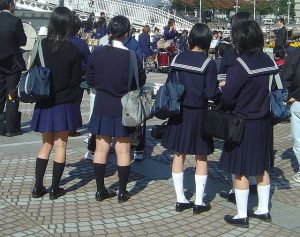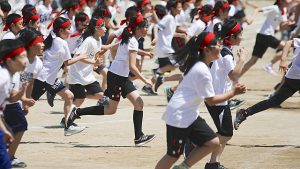- The Japanese fiscal year begins on April 1st and ends in March of the following year. A new Japanese school year also begins in April which is the start of the spring semester. September is the start of the fall semester.
- Compulsory education consists of elementary school education (six years for kids six years of age to 12) and middle school (three years for kids 13-15 years of age). High school is three years for kids 16-18 years of age. Post high school, some elect to go to a four-year college, two-year junior college, or vocational school.
- More than 95% of students attend secondary and post-secondary schools in Japan, which is higher than the rate within the OECD countries, generally at 85% or so.
- Students go to school five days a week, sometimes with sports activities on the weekend.
- Kyuushoku, a school lunch, is offered at public elementary schools and middle schools throughout Japan. Students take turns going to the kitchen and bringing the food back to the homeroom to serve to their peer students.
- University students can participate in extracurricular activities known as “サークル” (saakuru) in Japanese. Depending on the universities, they may include sports clubs, cultural clubs, music clubs, language clubs, academic clubs, community service clubs, and more
|

Students in school uniform

School sports festival

School lunch

Japanese classroom image source |
Sources:
- Japanese education system
https://www.us.emb-japan.go.jp/itpr_en/education-system-in-japan.html
- Students in school uniform:




